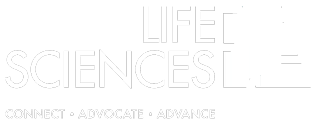 In order for the Internal Revenue Service (IRS) to verify that individuals and employers are meeting their shared responsibility obligations and that individuals who request premium tax credits are entitled to them, employers and issuers will be required to provide reporting on the health coverage they offer. The reporting requirements are in two separate sections of the Patient Protection and Affordable Care Act (PPACA) — sections 6055 and 6056. Reporting will first be due early in 2016, based on coverage in 2015.
In order for the Internal Revenue Service (IRS) to verify that individuals and employers are meeting their shared responsibility obligations and that individuals who request premium tax credits are entitled to them, employers and issuers will be required to provide reporting on the health coverage they offer. The reporting requirements are in two separate sections of the Patient Protection and Affordable Care Act (PPACA) — sections 6055 and 6056. Reporting will first be due early in 2016, based on coverage in 2015.
On March 10, 2014, the IRS published final regulations implementing this reporting requirement. However, the actual forms that will be used for this reporting have not yet been provided. A number of details will not be available until the reporting forms and instructions are released. The IRS says that a draft of the forms and instructions will be available soon.
The section 6055 information will be used to verify that an individual has minimum essential coverage. This information will be provided by the insurer for fully insured plans issued outside the individual Marketplace and for policies issued through the SHOP Marketplace. The Marketplace (also called the exchange) will do the reporting for individual policies sold through the Marketplace. Entities that do not offer fully insured coverage, such as employers that sponsor self-funded plans (no matter how small), the joint trustees or committee that oversees a multiemployer plan and the government agency that provides non-employment coverage (such as Medicare and Medicaid) also must report this information.
The section 6056 information will be used to determine whether a large employer is offering affordable, minimum value coverage to full-time employees, and to calculate the penalty if it is not. This information also will be used to help determine whether an employee is eligible for a premium tax credit. All large employers (those with 50 or more full-time or full-time equivalent employees in the prior calendar year) must provide section 6056 reporting, regardless of whether the group health plan is fully insured or self-funded.
Therefore, depending on their size and method of funding, employers and issuers may need to complete one or both parts of the form. Generally, an employer with fewer than 50 full-time and full-time equivalent employees that sponsors a fully insured group health plan will not be required to do any reporting. An employer with fewer than 50 full-time and full-time equivalent employees that sponsors a self-funded group health plan will complete the section 6055 portion of the form. An employer with 50 or more full-time and full-time equivalent employees that sponsors a fully insured plan will complete the section 6056 portion of the form. An employer with 50 or more full-time and full-time equivalent employees that sponsors a self-funded plan will complete both parts of the form.
The reporting will occur with the same timing and process as W-2 and W-3 reporting. The individual will receive a report on an IRS Form 1095 that provides information about his or her coverage. The individual’s report will be due on January 31 following the calendar year that is being reported. The employer will provide a “roll-up” report using an IRS Form 1094 and copies of the individual 1095 forms. The employer report will be due by February 28 (or March 31 if filed electronically). Employers will be required to file electronically if they issue 250 or more forms. Reporting must be done on a calendar year basis, even if the plan or policy operates on a non-calendar year.
The 1095 form only needs to be provided to the named insured. Employers that mail the form may send it with the W-2 form. If the form is mailed to the employee’s last known permanent address and it is returned, the employer does not need to resend the form. Employers may provide the form electronically to the employee if the employee provides a consent that meets certain requirements. If the form is sent electronically and it is returned, the employer must try to obtain a current electronic address. If that is not possible, the notice must be mailed or hand-delivered within 30 days.
Employers concerned about maintaining and transmitting Social Security numbers may use truncated numbers (XXX-XX-1234). Substitute forms will be permitted.
For more information on minimal essential coverage reporting and large employer reporting, view UBA’s latest article: IRS Releases Final Reporting Regulations.





